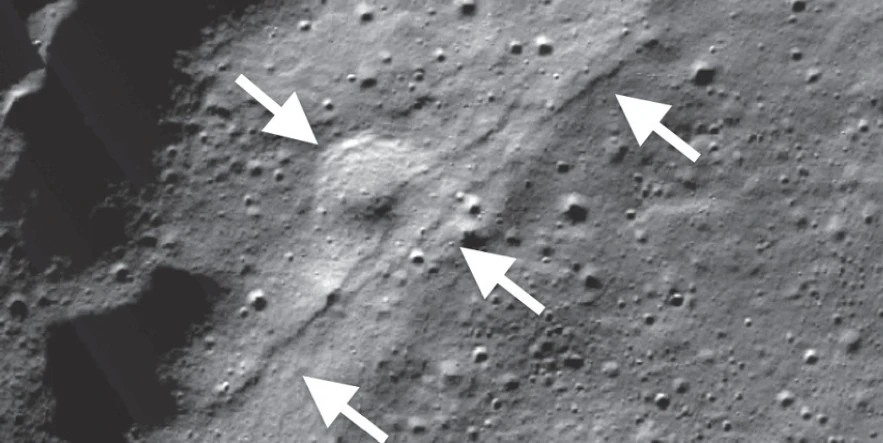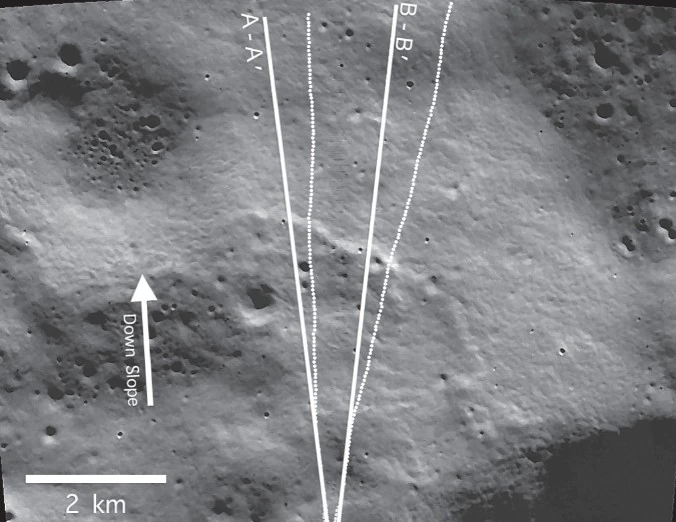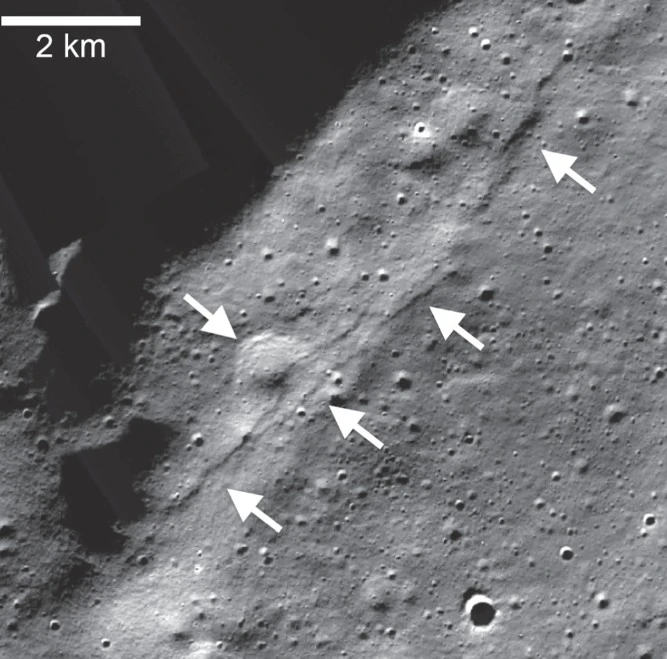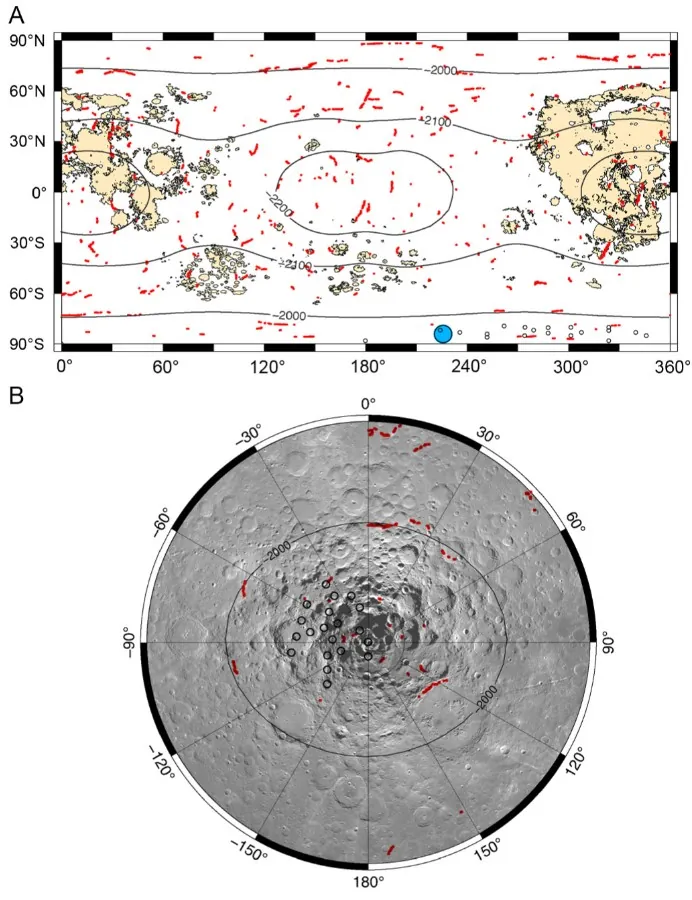Research points to strong moonquakes from lunar faults, impacting future missions

A recent study published in the Planetary Science Journal by T. R. Watters and colleagues in 2024 highlights the contractional deformation and associated seismicity at the lunar south pole, particularly within the de Gerlache Rim 2 Artemis III candidate landing region, raising concerns for future robotic and human exploration.
The lunar south pole is no stranger to the forces of global compressional stresses, leading to notable tectonic deformation manifesting as lobate thrust fault scarps. These geological formations, significant for their association with moonquakes, are distributed across the lunar surface, including areas proposed for future Artemis missions. A cluster of these scarps, located within the de Gerlache Rim 2 Artemis III candidate landing region, could be indicative of seismic activity capable of impacting lunar exploration efforts.
The study by T. R. Watters et al. (2024) emphasizes the seismic potential of the lunar south polar region, linking the formation of the largest de Gerlache scarp to one of the strongest shallow moonquakes recorded by the Apollo Passive Seismic Network.


Modeling efforts suggest that a moonquake with a magnitude of approximately 5.3 could have generated the observed lobate thrust fault scarp.
The finding shows the potential for significant ground shaking from seismic events originating from these scarps, extending at least 40 km (25 miles) from the source and potentially triggering regolith landslides across steep slopes, such as those found in the Shackleton crater.
Given the proximity of these scarps to proposed Artemis III landing sites, the study highlights the need for careful consideration of seismic risks in planning and locating permanent outposts. The potential for regolith landslides, exacerbated by even light seismic shaking, points to the critical importance of understanding the lunar surface’s geotechnical properties, particularly the cohesion of lunar regolith which plays a pivotal role in slope stability.

While previous studies, such as Mishra & Kumar (2022), have suggested a lower seismic hazard from lobate scarp faults, Watters et al. argue for the possibility of stronger moonquakes and associated regional seismic shaking that could pose significant challenges to the safety and success of future lunar missions.
As humanity plans new lunar missions, understanding and mitigating the risks posed by its complex tectonic and seismic environment becomes paramount. Further research and advanced modeling will be essential in ensuring the safety and longevity of human and robotic presence on the Moon.
References:
1 Tectonics and Seismicity of the Lunar South Polar Region – T. R. Watters et al. – American Astronomical Society – January 25, 2024 – DOI 10.3847/PSJ/ad1332 – OPEN ACCESS
Featured image credit: AAS/The authors

Commenting rules and guidelines
We value the thoughts and opinions of our readers and welcome healthy discussions on our website. In order to maintain a respectful and positive community, we ask that all commenters follow these rules.